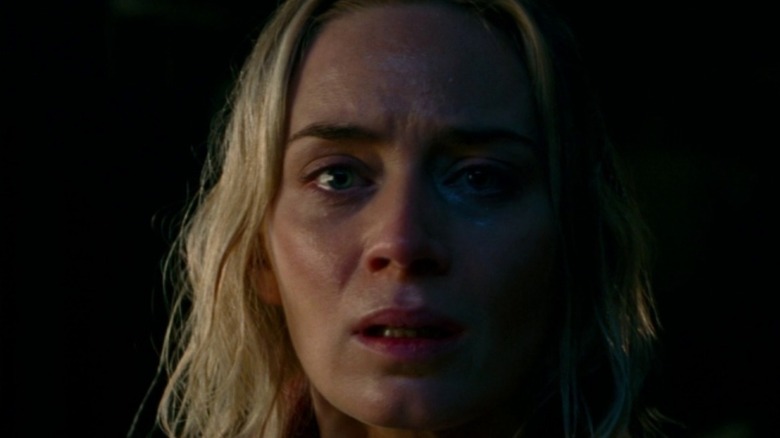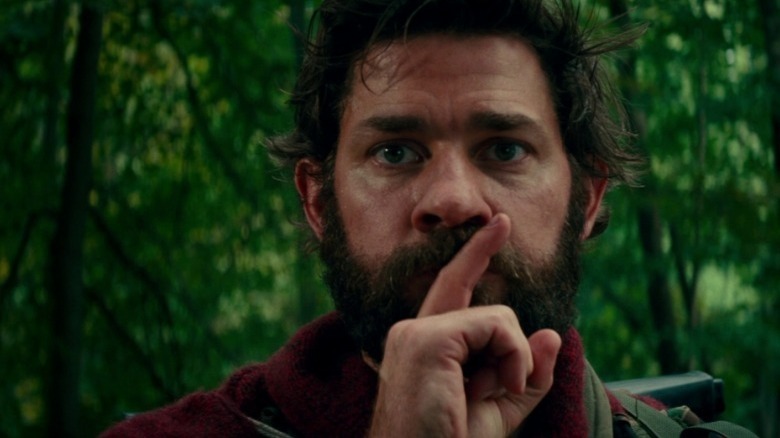How A Quiet Place Revolutionized The Horror Genre And You Didn't Even Notice
"A Quiet Place" isn't a movie you'd normally expect to innovate a genre. An actor's first big-budget movie (John Krasinski had previously made indies "Brief Interviews with Hideous Men" and "The Hollars"), starring him and his movie star wife? Sounds self-indulgent as all get out. But "A Quiet Place" was well received at the box office and highly critically praised. Rotten Tomatoes gave it a 96% approval rating and commended how the movie "artfully plays on elemental fears." It also cited Krasinski as an emerging directorial talent, which is probably part of why "A Quiet Place 2" was greenlit so quickly.
It wasn't just general audiences that found a lot to love in "A Quiet Place," either — horror buffs also noted its technical prowess. Stephen King — Mr. Spooky himself — tweeted his praise for the film, writing, "A QUIET PLACE is an extraordinary piece of work. Terrific acting, but the main thing is the SILENCE, and how it makes the camera's eye open wide in a way few movies manage." And it's the film's use of silence that revolutionized horror.
The script treats sound as a character
The team behind "A Quiet Place" was nominated for an Academy Award in 2019 for Best Sound Editing, and it's easy to see why. The film relies on sound to build tension in a way you don't often see. Or hear, for that matter. This attention to sound was built into the original script by Scott Beck and Bryan Woods — something that isn't usually done, according to YouTube channel Lessons from the Screenplay. Sound is typically an afterthought, something the post team tweaks with the director long after the screenwriter has been cut a check and shut out of the process.
Horror movies use sound to scare all the time, but usually in a loud and brash manner. Indeed, so-called "jump scares" are designed to startle more than build tension. One of the most tropey is the "cat scare," where a yowling cat breaks the tension of someone who senses that an unseen presence is out to get them. But there are no cat scares in "A Quiet Place" — every sound could be lethal. "[I]t was about really stripping everything out and building up what we needed, which is sometimes kind of the opposite of what happens when you're putting the sound together for a movie," sound designers Erik Aadahl and Ethan Van der Ryn told Vox. "Everything is covered and designed, and during the mix, you start tweaking that. Here, it was kind of the inversion of that. We tried to start with nothing and then just introduce the very specific sounds that we wanted for any moment."

